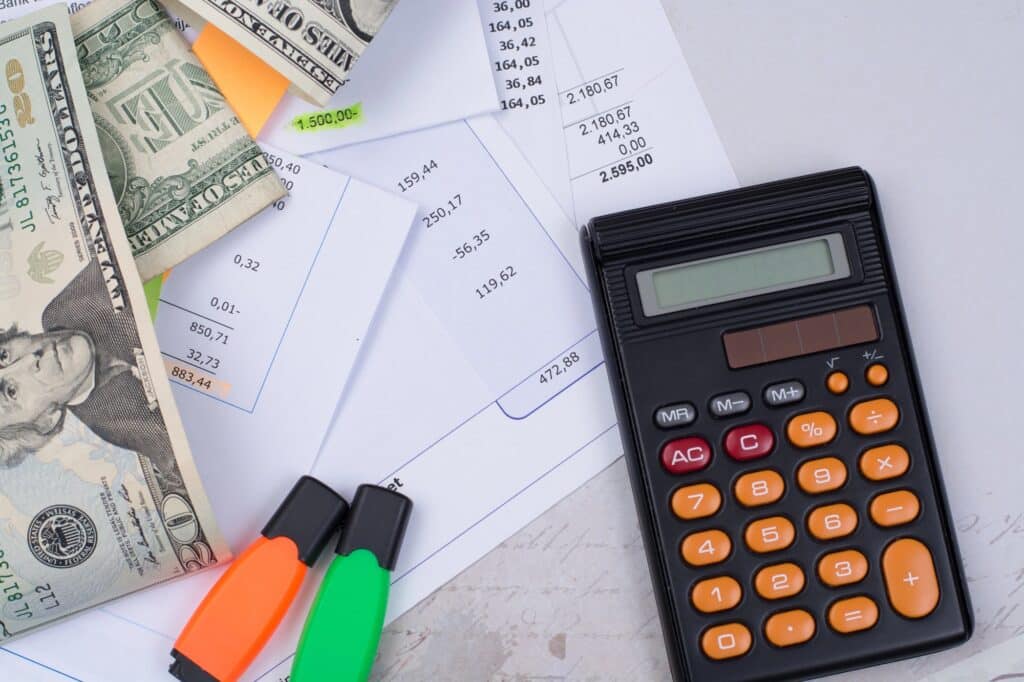Winter brings cold weather, and that often means higher energy bills. You can save money and stay warm by following simple energy-saving tips this season. Making a few adjustments in your home can lead to big savings without sacrificing comfort.

One easy way to cut costs is by checking your heating system. Regular maintenance keeps it running efficiently. You should also consider using sunshine to warm your home—open your curtains during the day and close them at night to trap heat.
Using energy-efficient light bulbs and unplugging devices when not in use will also help reduce your bills. Keeping drafts out and adjusting your thermostat can make a big difference, too. Small actions can lead to significant savings, making winter more enjoyable.
How Can You Optimize Your Thermostat Settings?
Setting your thermostat correctly can lead to significant energy savings during the winter months. Knowing the right temperature, the advantages of smart thermostats, and how programmable options work can help you maintain comfort while minimizing costs.
What Temperature Should You Set Your Thermostat in Winter?
A commonly recommended temperature for winter is 68°F (20°C) when you are home and awake. This temperature helps keep your home cozy while reducing energy use.
When you’re asleep or away from home, you can lower the thermostat by about 10 to 15 degrees. This small adjustment can save you up to 1% on your energy bill for each degree lowered over eight hours.
For maximum comfort and savings, consider gradually turning your thermostat down in the evening. Use a blanket or warm pajamas to stay cozy while you sleep, which will let you lower the temperature without sacrificing comfort.
How Does a Smart Thermostat Help You Save Energy?
A smart thermostat connects to your phone and allows you to monitor and change the temperature remotely. This means you can adjust settings if you leave home unexpectedly, ensuring you are not heating an empty space.
These devices learn your schedule and preferences over time. They can automatically lower the heat when you’re not home and raise it just before you return.
Using a smart thermostat can lead to energy savings of up to 15% on heating costs. Many models also provide insights into energy use, helping you make informed decisions about your heating habits.
What Are the Benefits of a Programmable Thermostat?
Programmable thermostats give you the ability to set different temperatures for different times of the day. This feature allows for energy savings without sacrificing comfort.
You can program them to lower temperatures during the night or when you’re away for extended periods, similar to a smart thermostat. This feature not only keeps costs down but also makes life easier, as you do not have to remember to adjust the thermostat manually.
Changing the furnace filter every few months and scheduling regular maintenance can also improve the performance of a programmable thermostat. Keeping your system in good shape adds to its efficiency and can lead to further savings on your energy bill.
What Are Effective Ways to Reduce Your Energy Bill?

Reducing your energy bill can be accomplished with some careful planning and smart choices. Several key strategies focus on insulation, water heater use, and a home energy assessment. These steps can help you save more energy and cut costs.
How Can Insulation Reduce Heat Loss?
Good insulation is essential for an efficient home. It helps keep the warmth inside during winter, which means you use less energy for heating. Insulation works by slowing down the transfer of heat.
To maximize savings, check your attic, walls, and floors. Attic insulation should be at least 12 inches thick to be effective. Consider using materials like fiberglass or foam.
Seal any gaps around windows and doors with weather stripping. This can prevent drafts and reduce your annual energy costs. Proper insulation can save as much as 10% on your heating bill, making it a smart investment.
What Role Does Your Water Heater Play in Energy Costs?
Your water heater is a major part of your energy usage. Heating water accounts for about 18% of your total energy costs. To save energy, check the heater’s thermostat setting. It should be around 120 degrees Fahrenheit for maximum efficiency.
Insulate your water heater and the first few feet of piping to reduce heat loss. Regular maintenance, like flushing the tank, can also help improve efficiency. Consider upgrading to an energy-efficient model if your current heater is old. This could significantly reduce energy consumption and lower your monthly bills.
How Can You Conduct a Home Energy Assessment?
A home energy assessment helps you find ways to improve energy efficiency. You can often do this yourself or hire a professional. Start by looking at your energy bills to spot patterns. High bills may indicate leaks or inefficient systems.
During the assessment, check insulation, windows, and doors. Look for drafts and heat loss areas. You can use energy-saving devices like smart thermostats to track usage.
Many utility companies offer free or discounted assessments. Taking advantage of these programs can help you identify where to reduce your energy usage. With the right changes, you can make your home more efficient and lower costs.
What Are Some Winter Energy Saving Tips for Your Home?
Making your home energy-efficient in winter is key to reducing costs and staying comfortable. You can achieve this by ensuring proper insulation, practicing efficient heating techniques, and taking advantage of available programs. Here are some important strategies to consider.
How to Properly Insulate Your Home?
Good insulation helps keep the warmth inside and the cold air outside. Start with checking the attic, as heat rises and can easily escape through it. Insulating your attic with fiberglass or foam can prevent this loss.
Next, inspect your walls and floors. Adding foam board or spray foam insulation can enhance warmth. Use weather stripping and caulk around windows and doors to seal gaps.
Don’t forget about your basement. Insulating pipes and walls can help maintain a more stable temperature. Proper insulation can significantly cut down on your energy consumption this winter.
What Are the Best Practices for Heating Your Home Efficiently?
Adjusting your thermostat is one of the simplest ways to save on your heating bills. Set it lower when you are away or sleeping. Aim for a temperature of around 68°F when you are home.
Using a programmable thermostat can help automate these adjustments. Consider investing in a heat pump, which is more efficient than traditional heating systems.
Make sure to keep vents clear of furniture and other obstacles to allow heat to spread evenly throughout your home. Regular maintenance of your heating system can also ensure it runs efficiently.
Are There Programs to Help You Save on Energy Costs?
Many local and state programs offer financial assistance for energy efficiency upgrades. Check with your utility company for rebates on insulation or energy-efficient appliances.
In some areas, there may be grants or low-interest loans available to help you make necessary improvements. Researching these options might uncover savings opportunities that can reduce your energy costs.
You can also inquire about energy audits, which identify areas where your home can be more efficient. These services can provide tailored advice to help maximize your savings during the winter months.
How Can You Monitor Your Energy Usage During Winter?

Monitoring your energy usage in winter can help you save money and reduce waste. It involves using tools and analyzing your utility bill effectively. Being aware of common mistakes can also prevent high energy costs.
What Tools Can Help Track Your Energy Usage?
To keep an eye on your energy consumption, you can use several practical tools. One effective option is a smart thermostat, which lets you set schedules. This helps you heat your home only when needed, cutting down your electricity bill significantly.
Another useful resource is an energy monitor. Devices like these can track the real-time energy usage of individual appliances. They show you which items consume the most power, allowing you to make smarter choices.
Consider conducting an energy assessment of your home. This can identify areas where you lose heat. Knowing these spots can guide improvements to reduce electricity usage.
How to Analyze Your Utility Bill for Savings?
Your utility bill is a valuable document for monitoring energy usage. Start by looking at your total electricity usage in kilowatt-hours (kWh). This figure helps you understand how much energy your household consumes.
Next, check for any patterns in your bill. Compare this winter’s bill with those of previous months. If you see a jump in usage, pinpoint changes in your daily activities that may have contributed.
Also, look for fees and charges on the bill. Some providers have plans that offer lower rates during off-peak hours. Switching to one of these plans can lead to savings if you adjust your usage times.
What Are Common Mistakes That Lead to High Energy Costs?
Many homeowners make simple errors that raise energy costs. One common mistake is leaving lights on in unoccupied rooms. A quick habit change of turning off lights can make a difference over time.
Another issue is neglecting to maintain heating equipment. Dirty filters restrict airflow and make your system work harder, which raises energy usage. Regular maintenance ensures your heating system operates efficiently.
Lastly, avoid over-relying on space heaters for warmth. While they can help, using them too often can lead to high electricity bills. Instead, focus on improving insulation and sealing drafts in your home for better energy efficiency.
How to Seal Drafts and Prevent Heat Loss?
Start by checking for drafts around doors and windows. Common spots include gaps where frames meet walls. The best way to seal drafts is to use weather stripping or caulk.
Buy a caulking gun and caulk to fill small cracks. For larger gaps, apply self-adhesive weather stripping. Don’t forget to check your attic and basement for leaks, too.
Another tip is to cover windows with thick curtains or insulating window film. This helps trap heat inside. Also, consider using draft stoppers at the bottom of doors to block chilling air.
These actions can make a big difference in your home’s energy efficiency. You can save money while keeping your space cozy.
What Household Habits Can Help You Save Energy?
Adopting energy-saving habits in your daily life is key. Start by adjusting your thermostat. When you are home, set it to a comfortable 68°F. While you’re away, lower it by a few degrees.
Next, focus on your laundry routine. Always wash and dry full loads. If you can, use cold water for washing. This will cut down on energy use significantly.
Also, avoid using your oven for small meals. Instead, use a microwave or toaster oven. These are more energy-efficient for heating food.
Lastly, turn off lights in rooms you’re not using. You can also switch to LED bulbs, which use less energy and last longer. Making these changes can lead to noticeable savings on your bills.
How to Use Warm Air Effectively?
To maximize warm air, ensure your heating vents are clear. Move furniture away from vents to allow the air to flow freely.
Consider using ceiling fans to help distribute warmth. Run the fan in reverse at a low speed to push warm air down. This can help maintain an even temperature throughout the room.
Another effective tip is to close doors to unused rooms. This helps to keep the warmth concentrated in the areas you use most.
You can also let natural light in during the day. Open curtains when the sun shines. This adds extra warmth without costing you a dime.
Frequently Asked Questions
Finding ways to save energy and lower your bills in winter can be straightforward. You’ll learn practical tips for cutting costs and ensuring your home stays warm without wasting energy.
-
How can I lower my energy bill in winter?
To lower your energy bill in winter, start by sealing any drafts around windows and doors. Use weather stripping or caulking to prevent cold air from entering your home.
Consider adjusting your thermostat. Keeping it a few degrees lower can result in significant savings. Dress warmly indoors to avoid turning up the heat too much. -
How can we save energy in winter?
Saving energy in winter can be achieved with simple changes. Use heavy curtains to trap heat in your home at night. During the day, open them to let sunlight in.
Another tip is to lower the thermostat on your water heater. Setting it to 120 degrees Fahrenheit is usually sufficient for most household needs. -
How to save money on heating in winter?
To save money on heating, maintain your heating system regularly. Replace filters monthly and schedule annual inspections to ensure everything runs smoothly.
Consider using space heaters in rooms you’re using most. This allows you to keep the main heating system lower while still staying warm. -
What temperature should my house be for energy saving in winter?
To save energy in winter, set your thermostat to around 68 degrees Fahrenheit when you are home. When you leave, lowering it to around 60 degrees can also help.
